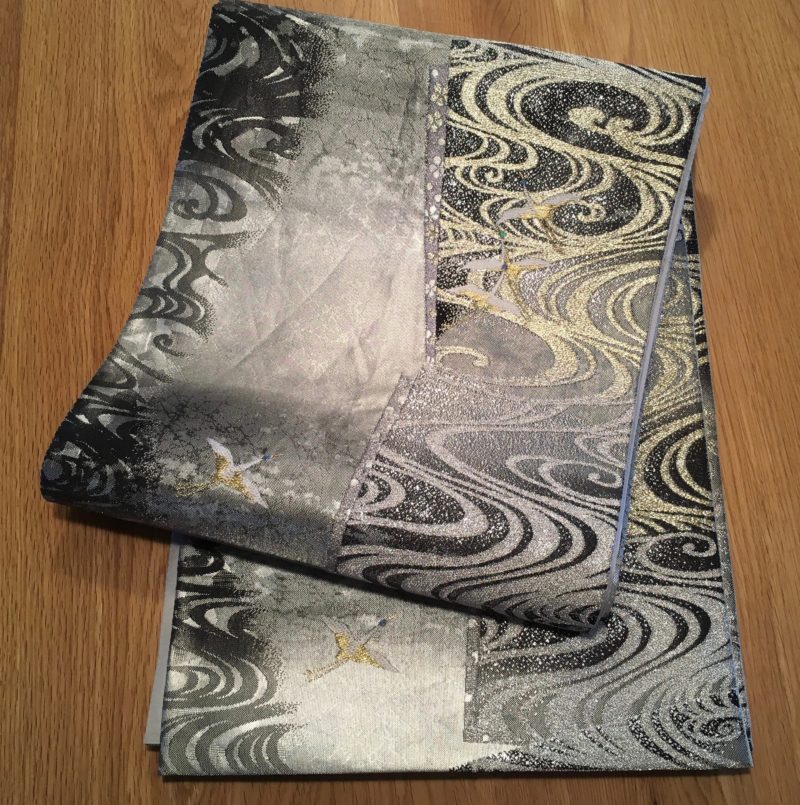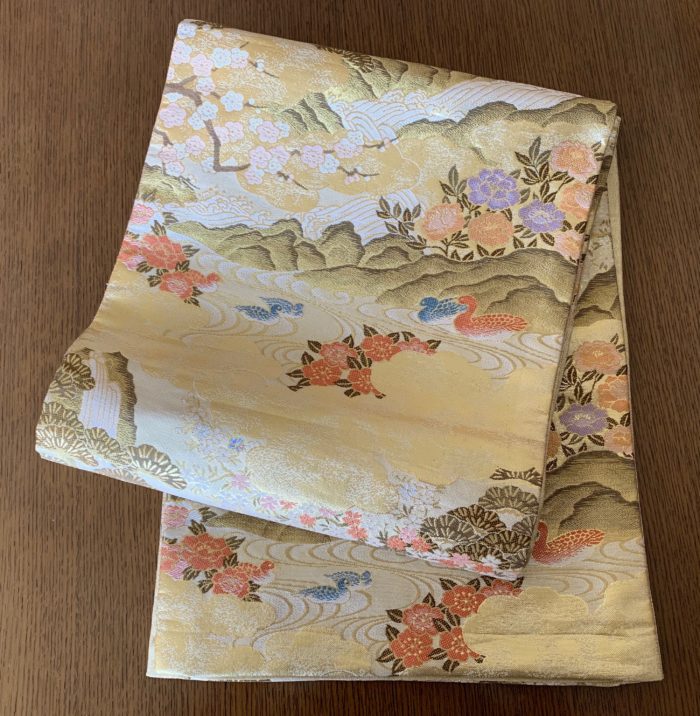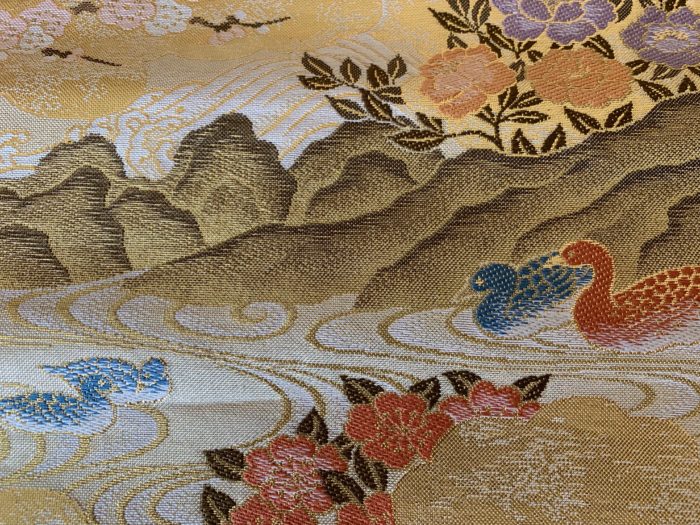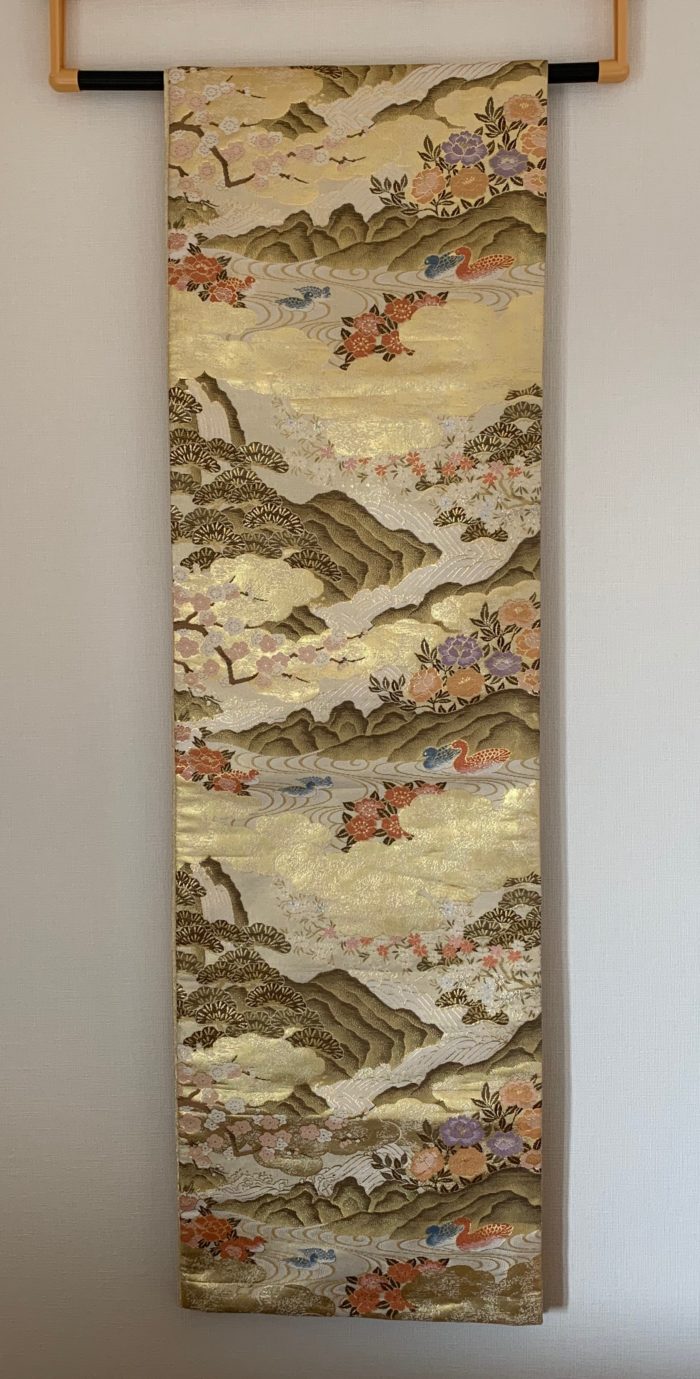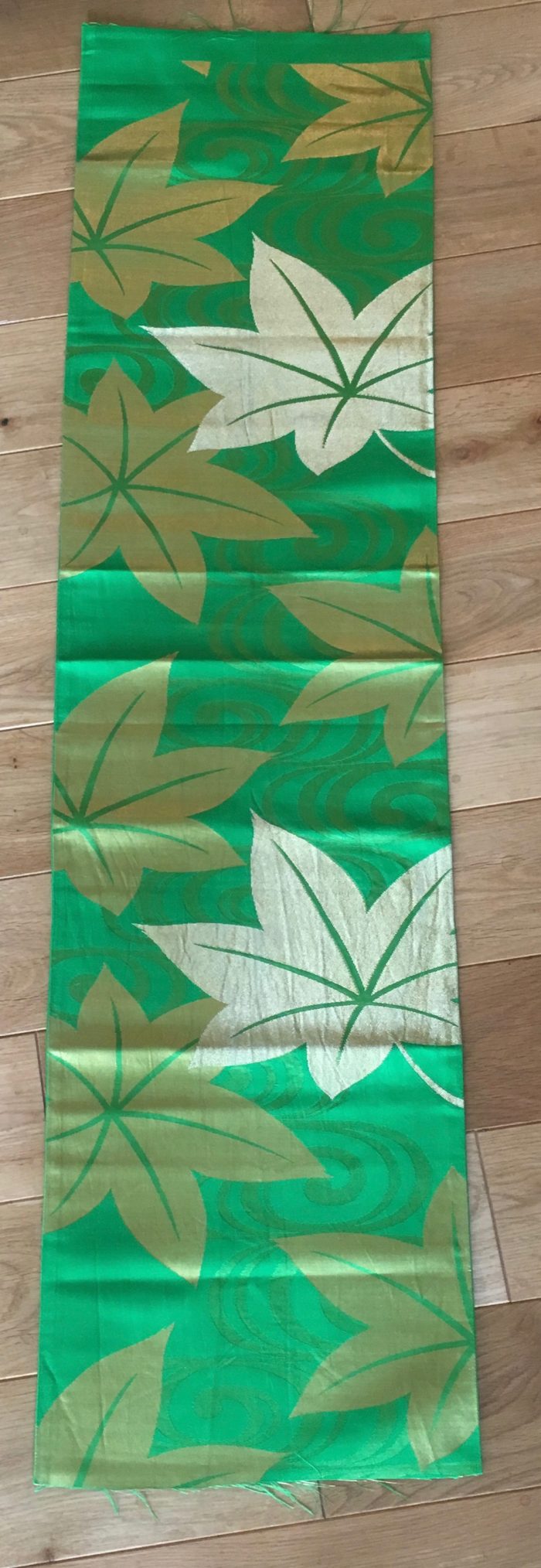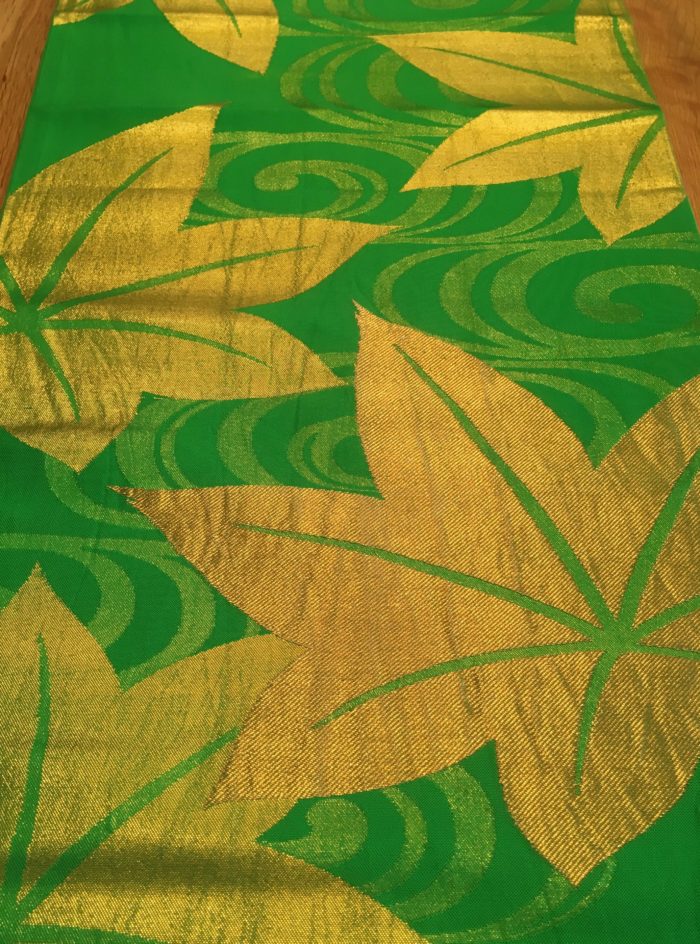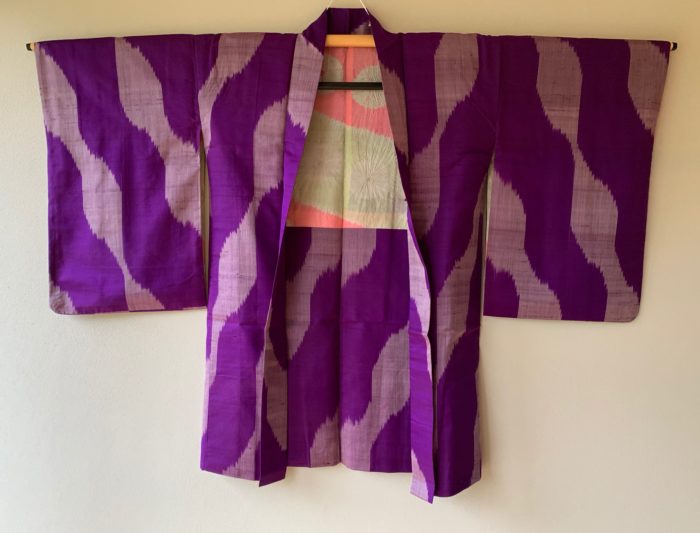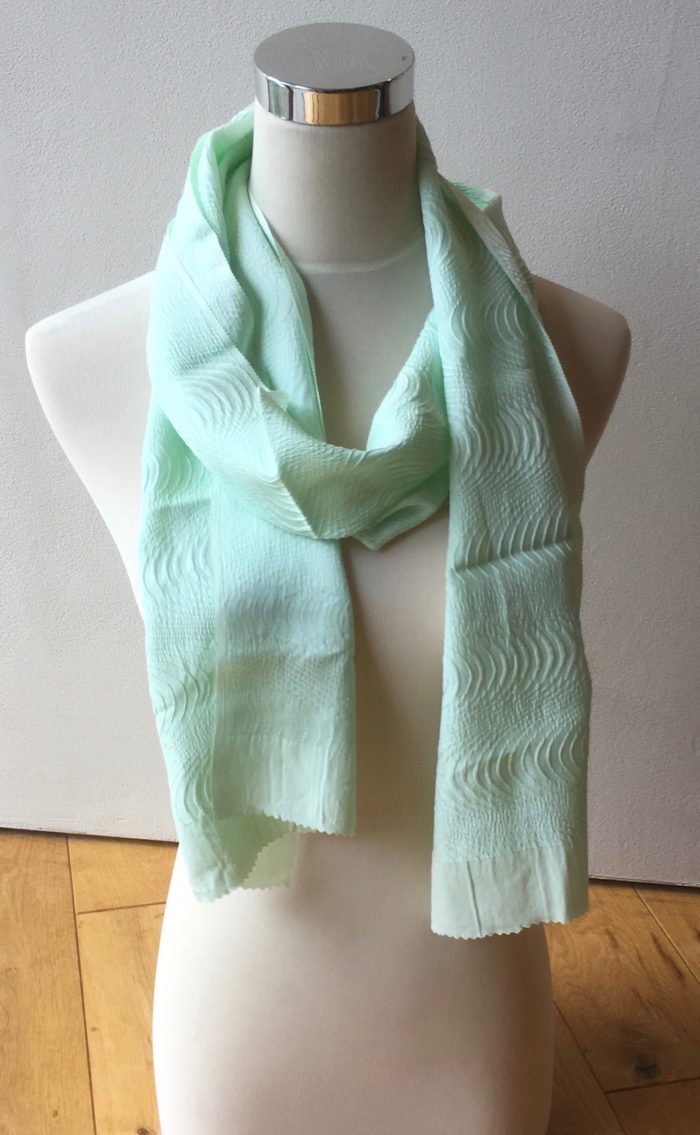Kimonos and obis have various stream patterns, but many are rapid flows.
The Japanese archipelago has a mountain range with a height of 1000 to 3000 m running like a spine and is divided into the Pacific side and the Japan Sea side, so the overall length compared to rivers in Europe and the United States is very short and flows fast.
The Joganji River flowing through Toyama Prefecture has an elevation difference of about 3000m from the headwater to the river mouth. The river is only 56km long. One of the fastest rivers in the world. In the Meiji era, a Dutch engineer dispatched for the construction of the river reportedly said, “This is not a river. It is a waterfall.” The flow of this river felt very fast compared to the slow flowing European river.
The Japanese compared stream as a change in life, starting with a drop of water, the source of life, creating a large flow and pouring into the sea. There, we combined various motifs such as bridges, plants, flowers, water birds, water wheels, fishing gear, and fans.
The Fukuro Obi as above is with patterns of waterfall,rapids and deep pool.Various flows of the river are pictorially expressed with flowers and birds.
Various flows are pictorially depicted in the limited space of this obi, but such a diverse landscape can be seen in a short and steep Japanese river.However, the riverbank is full of seasonal flowers, so it is a very decorative design rather than a natural scenery.
By designing such a flow, a pattern was completed, and it became widely used.The swirling and gently flowing patterns are said to be “kanzemisu” and are popular and elegant patterns.
In this fukuro obi fabric, maple leaves fall and float in the “kanzemizu” the stream expression. It is a summer obi that anticipates autumn and produces coolness mainly in green.

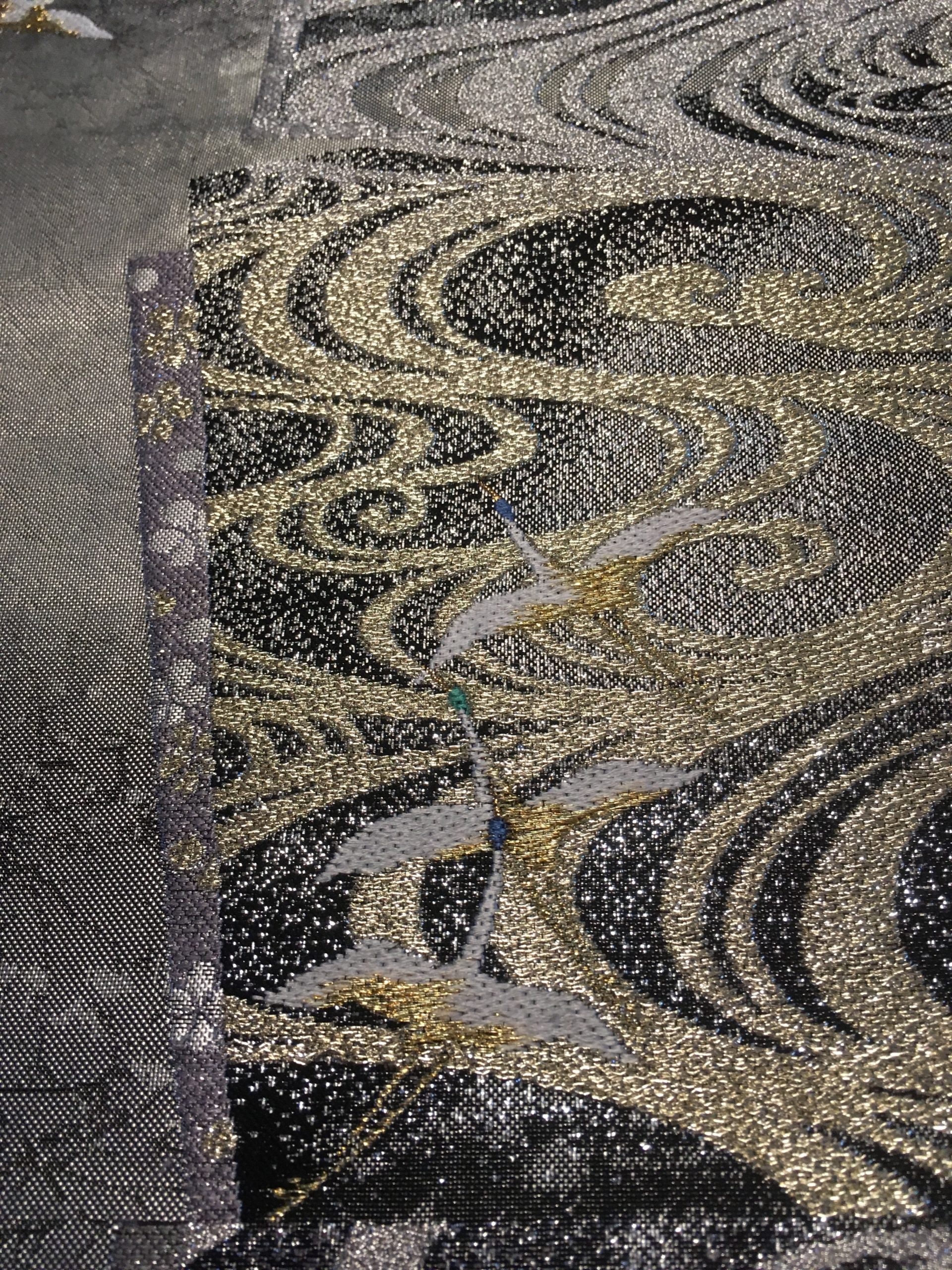
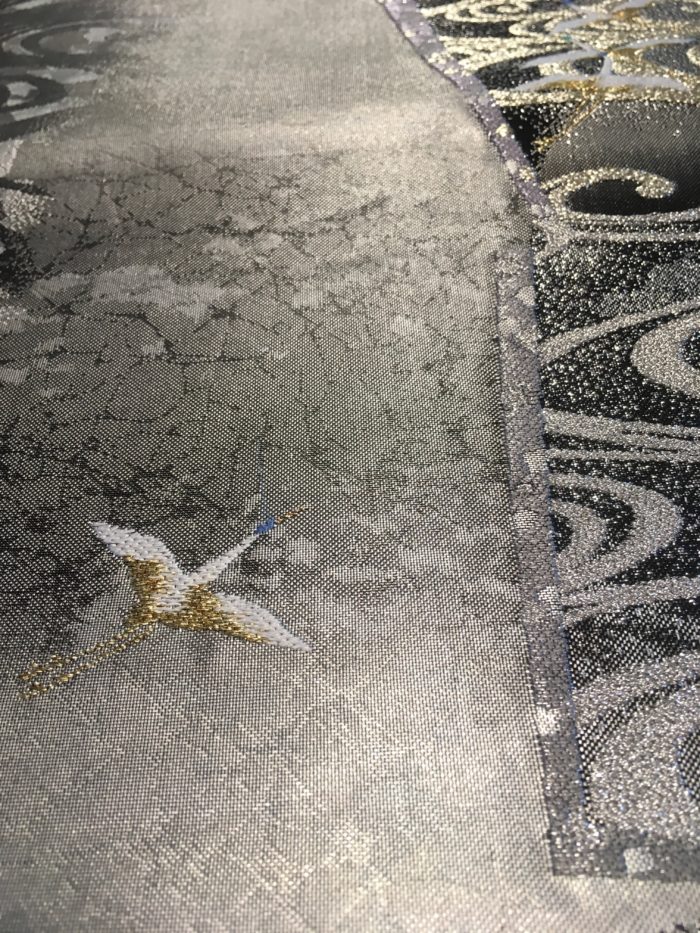
In this fukuro obi, a fantastic flow is depicted using gold and silver threads. A crane dances over the sky. Some parts appear on ice. Very elegant finish.
Before World War II, stream motifs were indispensable in various garments such as Kimono, Haori, and Juban.
To date, strem motifs have been a popular pattern. The next item is crepe silk obiage. The unique relief of crepe expresses running water.
